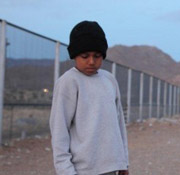
Educators and clinicians have long recognized that children and youth with social, emotional, and learning problems often experience neglect and abuse in earlier years. Research now shows that harm associated with traumatic childhood experiences does not end when young people grow up.
In the Adverse Childhood Experiences Study (ACE Study) investigators from the Kaiser Permanente Health Appraisal Clinic in San Diego and the Centers for Disease Control and Prevention examined the impact of mistreatment in childhood on well-being in adult life by monitoring the health of a cohort of men and women who, in the course of comprehensive medical assessments during 1995 to 1997, answered questions about trauma during childhood. The questions were embedded in a Family Health History questionnaire and elicited information on ten types of adverse childhood experiences (ACEs).
Five of the experiences reflect family dysfunction (household member substance abuse, mental illness, or incarceration; parental separation or divorce; mother treated violently). Three reflect emotional, physical, or sexual abuse of the individual. And two reflect emotional or physical neglect of the individual.
Researchers assigned one point for each type of adverse experience an individual endorsed, so that each study participant received an ACE score in the range 0 to 10. Of the more than 17,000 participants, characterized as “average Americans,” 36 percent had ACE scores of 0; 26 percent had scores of 1; 16 percent had scores of 2; 9.5 percent had scores of 3; and 12.5 percent had scores of 4 or more. Multiple adverse experiences were frequently interconnected, such as when individuals who reported an alcoholic father also reported physical and emotional abuse.
When the investigators looked for links between childhood trauma and adult problems, they found plenty. Their data suggest childhood trauma predisposes people to serious medical and social problems in adulthood, including alcoholism, injection drug use, other mental illness, chronic medical illness, time in prison, and problems at work. Investigators also found a dose-response effect. That is, higher ACE scores were associated with higher risks of medical, mental, and social problems as adults.
Correlations abound. For example, individuals with ACE scores of 4, when compared to individuals with ACE scores of zero, had a 390 percent greater risk of chronic obstructive pulmonary disease, a 240 percent greater risk of hepatitis, and a 240 percent greater risk of sexually transmitted diseases. They also had twice the risk of smoking, twelve times more suicide attempts, seven times more alcoholism, and ten times more injection drug use. High ACE scores correlate with more: domestic and other kinds of violence, serial marriages, broken bones, depression, autoimmune diseases, and work absences.
The dramatic findings of the ACE Study—which have significant implications for clinical and preventive policies and practices—are being recognized and applied at a gradual pace. Too gradual for some observers, who believe people ought to be as aware of their ACE scores as they are of their cholesterol levels, and just as quick to adopt selective interventions to mitigate their risk of dire consequences.
While simply knowing about a risk sometimes changes behavior—certain parents, for example, are determined that the ACE scores of their children will be lower than their own—strategies to offset the risks of high ACE scores generally involve talk or interpersonal therapies. This makes sense at a surface level. ACE scores measure a person’s net exposure to toxicinterpersonal relationships; nourishing interpersonal relationships help heal the damage.
It also makes sense at the deeper level of neurobiology. In childhood, the structure and function of the brain develop—for the better and for the worse—through interactions with other brains, especially those of primary caretakers. Fortunately for those whose formative years were troubled, positive interpersonal relationships continue to increase our resilience as long as we live.
The future depends on the children around us. It’s a comfort to know that policies and programs are emerging, at whatever pace, to guide caretakers and therefore protect children from adverse experiences during childhood. When those experiences have already occurred, these same policies and programs help to promptly offset any damage with healing experiences.
To think about: When a child has a parent addicted to alcohol or another drug, we count it as an adverse childhood experience. What happens when the parent enters lasting recovery?
